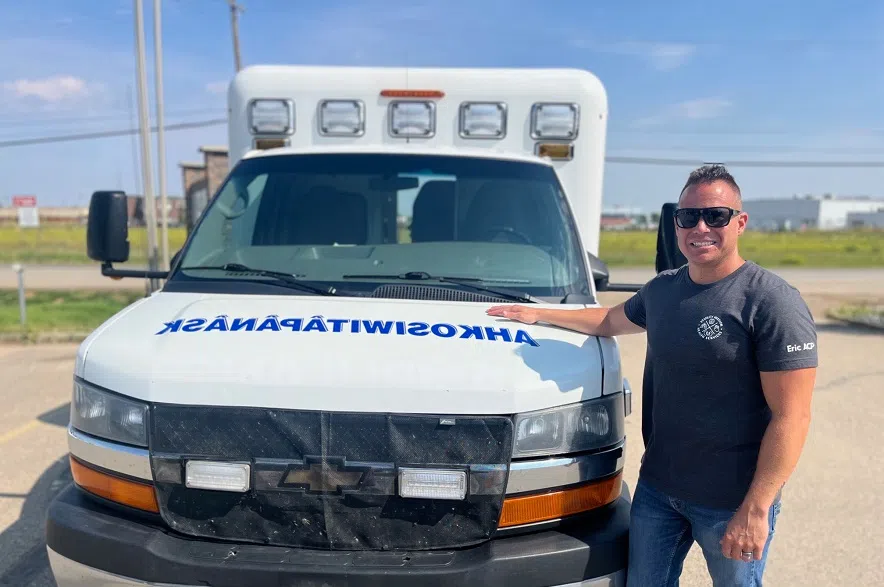Stanley Mission Cree Nation will now benefit from enhanced medical transportation from a dedicated first responder vehicle.
Previously, patient transportation to the local clinic was in the box of a truck or SUV.
The northern Saskatchewan community is home to around 2500 people, it’s located 305 kilometers north of Prince Albert and is part of the Lac La Ronge Indian Band.
In Stanley Mission when 911 is called, La Ronge EMS responds. The typical wait time can last from 50 to 90 minutes depending on road conditions. Staff at the Stanley Mission Clinic are contacted to respond first to the call, which means moving the patient to the clinic for proper care while they wait for the ambulance.
In 2024, there have been four cardiac arrests in the community, two of which were transported to the clinic in the back of a pickup truck, and two in the back seat of an SUV.
Eric Jelinski — who helped spearhead the project — is an advanced paramedic who works in the community. He said at times transportation was dangerous for both the first responder and the patient, especially in the harsh winter months.
“You can’t run an IV in -30, it’s hard to do CPR in the back of an SUV,” he said.
“I think of one call where an elder fell and fractured their hip. We had to assist this elder in getting to the clinic by private vehicle, and although we could start an intravenous line and give medications it was just uncomfortable — it’s not the best standard of care.”
Read more
- EXCLUSIVE: Rylan Wiens celebrates Olympic bronze medal in Sask.
- Stanley Mission gets dedicated vehicle for safer patient transportation
- Massive meth, cocaine, heroin bust in Saskatoon

Stanley Missions first responder vehicle reads “Ahkosiwitâpânâsk,” meaning “sick vehicle” in Cree. (Mia Holowaychuk/ 650 CKOM)
Janet McKenzie, the nurse manager at Stanley Mission Clinic who helped with the project echoed that statement.
“It had become quite apparent that doing CPR in the back of a half-ton in the middle of winter is not ideal (when) trying to save somebody’s life,” she said.
So, Jelinski and fellow paramedics drafted a proposal to send to Medavie Health Services West requesting a first responder vehicle. Medavie in turn provided a retired front line truck to be used in the community.
The proposal was also received by other organizations such as the Saskatoon Paramedics Association, The National Police Federation, and Vallen, an industrial supplier to help make the vision possible.
Now, the first responder vehicle will be able to transport patients safely, effectively, and more appropriately to the clinic — including a spine board or scoop stretcher. Additionally, it can carry more medical equipment necessary for patient care such as oxygen and IV supplies.
“Historically, we were carrying just a couple of bags, throwing them in the trunk of a car, ripping over to the scene really quick,” Jalinski said. “The bare bones type (of) stuff, because that’s what you could carry on your back.”
The first responder vehicle does not operate like a full ambulance which would traditionally have the inverted word displayed in front. Instead, the vehicle reads “Ahkosiwitâpânâsk,” meaning “sick vehicle” in Cree. McKenzie said she consulted a local Cree language teacher about the name, noting the Cree language is prominent in the Stanley Mission community.
Jelinski says he hopes the community will feel a sense of pride after seeing the vehicle, adding that bringing a high level of care right to the front door will have an immediate positive impact on both patients and paramedics.
“How do you put a dollars and cents value on life-saving capabilities, you can’t,” he said.
McKenzie and others in the community are excited about its arrival which is expected Wednesday. She hopes it will improve patient outcomes overall.
Read more











